Hongliang Luo
6D Motion Parameters Estimation in Monostatic Integrated Sensing and Communications System
Jul 11, 2024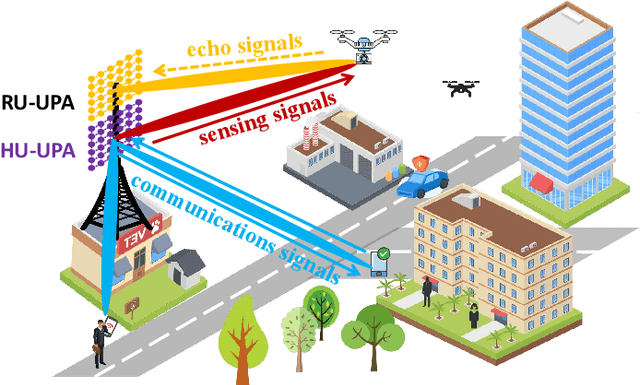
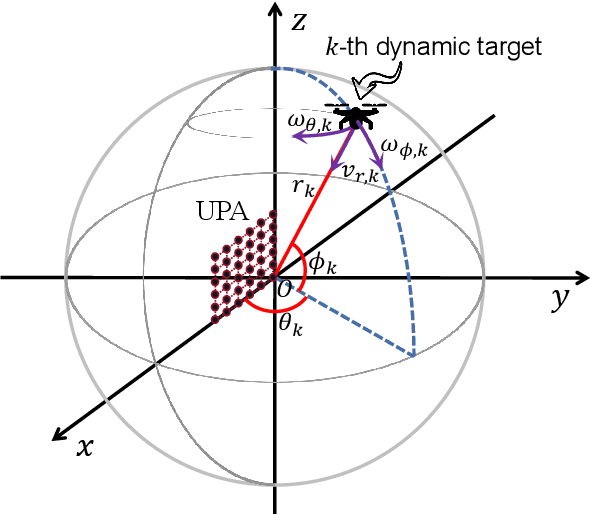
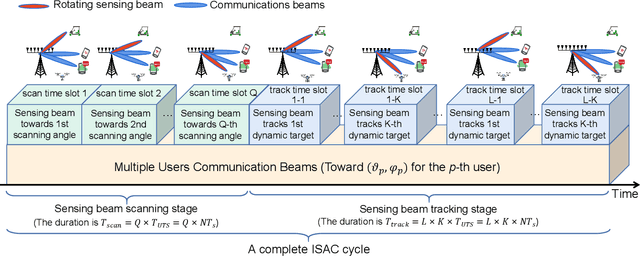
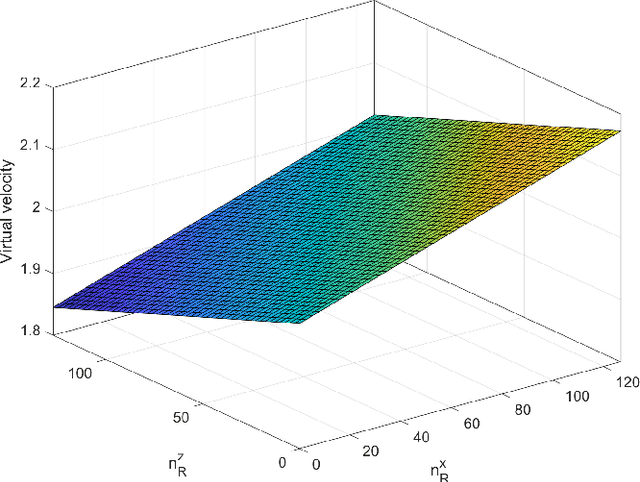
Abstract:In this paper, we propose a novel scheme to estimate the six dimensional (6D) motion parameters of dynamic target for monostatic integrated sensing and communications (ISAC) system. We first provide a generic ISAC framework for dynamic target sensing based on massive multiple input and multiple output (MIMO) array. Next, we derive the relationship between the sensing channel of ISAC base station (BS) and the 6D motion parameters of dynamic target. Then, we employ the array signal processing methods to estimate the horizontal angle, pitch angle, distance, and virtual velocity of dynamic target. Since the virtual velocities observed by different antennas are different, we adopt plane fitting to estimate the dynamic target's radial velocity, horizontal angular velocity, and pitch angular velocity from these virtual velocities. Simulation results demonstrate the effectiveness of the proposed 6D motion parameters estimation scheme, which also confirms a new finding that one single BS with massive MIMO array is capable of estimating the horizontal angular velocity and pitch angular velocity of dynamic target.
Integrated Sensing and Communications Framework for 6G Networks
May 30, 2024



Abstract:In this paper, we propose a novel integrated sensing and communications (ISAC) framework for the sixth generation (6G) mobile networks, in which we decompose the real physical world into static environment, dynamic targets, and various object materials. The ubiquitous static environment occupies the vast majority of the physical world, for which we design static environment reconstruction (SER) scheme to obtain the layout and point cloud information of static buildings. The dynamic targets floating in static environments create the spatiotemporal transition of the physical world, for which we design comprehensive dynamic target sensing (DTS) scheme to detect, estimate, track, image and recognize the dynamic targets in real-time. The object materials enrich the electromagnetic laws of the physical world, for which we develop object material recognition (OMR) scheme to estimate the electromagnetic coefficient of the objects. Besides, to integrate these sensing functions into existing communications systems, we discuss the interference issues and corresponding solutions for ISAC cellular networks. Furthermore, we develop an ISAC hardware prototype platform that can reconstruct the environmental maps and sense the dynamic targets while maintaining communications services. With all these designs, the proposed ISAC framework can support multifarious emerging applications, such as digital twins, low altitude economy, internet of vehicles, marine management, deformation monitoring, etc.
6D Radar Sensing and Tracking in Monostatic Integrated Sensing and Communications System
Dec 27, 2023Abstract:In this paper, we propose a novel scheme for sixdimensional (6D) radar sensing and tracking of dynamic target based on multiple input and multiple output (MIMO) array for monostatic integrated sensing and communications (ISAC) system. Unlike most existing ISAC studies believing that only the radial velocity of far-field dynamic target can be measured based on one single base station (BS), we find that the sensing echo channel of MIMO-ISAC system actually includes the distance, horizontal angle, pitch angle, radial velocity, horizontal angular velocity, and pitch angular velocity of the dynamic target. Thus we may fully rely on one single BS to estimate the dynamic target's 6D motion parameters from the sensing echo signals. Specifically, we first propose the long-term motion and short-term motion model of dynamic target, in which the short-term motion model serves the single-shot sensing of dynamic target, while the long-term motion model serves multiple-shots tracking of dynamic target. As a step further, we derive the sensing channel model corresponding to the short-term motion. Next, for singleshot sensing, we employ the array signal processing methods to estimate the dynamic target's horizontal angle, pitch angle, distance, and virtual velocity. By realizing that the virtual velocities observed by different antennas are different, we adopt plane fitting to estimate the radial velocity, horizontal angular velocity, and pitch angular velocity of dynamic target. Furthermore, we implement the multiple-shots tracking of dynamic target based on each single-shot sensing results and Kalman filtering. Simulation results demonstrate the effectiveness of the proposed 6D radar sensing and tracking scheme.
Integrated Sensing and Communications in Clutter Environment
Nov 03, 2023



Abstract:In this paper, we propose a practical integrated sensing and communications (ISAC) framework to sense dynamic targets from clutter environment while ensuring users communications quality. To implement communications function and sensing function simultaneously, we design multiple communications beams that can communicate with the users as well as one sensing beam that can rotate and scan the entire space. To minimize the interference of sensing beam on existing communications systems, we divide the service area into sensing beam for sensing (S4S) sector and communications beam for sensing (C4S) sector, and provide beamforming design and power allocation optimization strategies for each type sector. Unlike most existing ISAC studies that ignore the interference of static environmental clutter on target sensing, we construct a mixed sensing channel model that includes both static environment and dynamic targets. When base station receives the echo signals, the mean phasor cancellation (MPC) method is employed to filter out the interference from static environmental clutter and to extract the effective dynamic target echoes. Then a complete and practical dynamic target sensing scheme is designed to detect the presence of dynamic targets and to estimate their angles, distances, and velocities. In particular, dynamic target detection and angle estimation are realized through angle-Doppler spectrum estimation (ADSE) and joint detection over multiple subcarriers (MSJD), while distance and velocity estimation are realized through the extended subspace algorithm. Simulation results demonstrate the effectiveness of the proposed scheme and its superiority over the existing methods that ignore environmental clutter.
Moving Target Sensing for ISAC Systems in Clutter Environment
Nov 03, 2023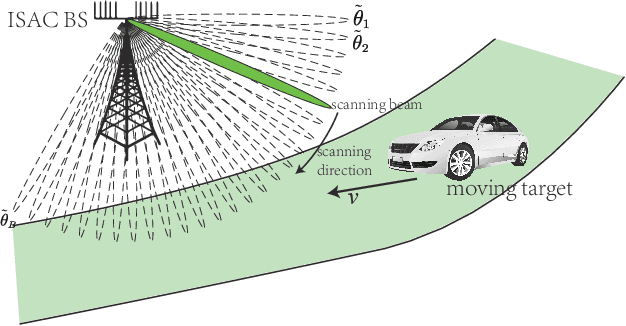
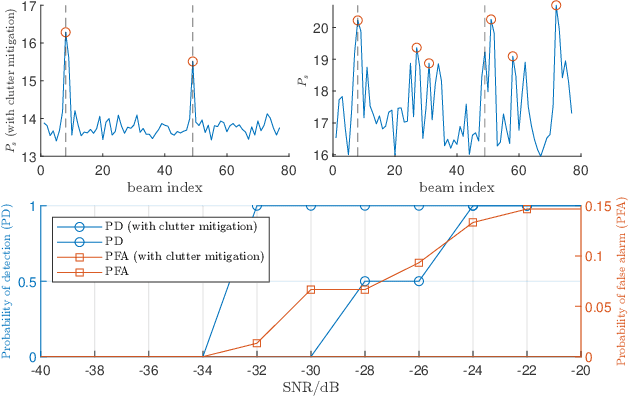
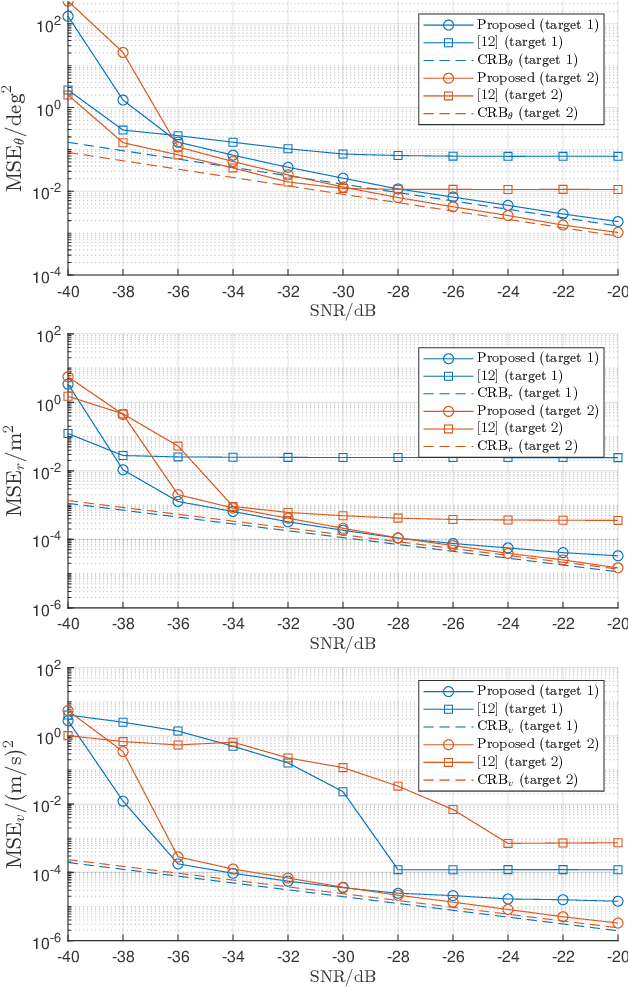
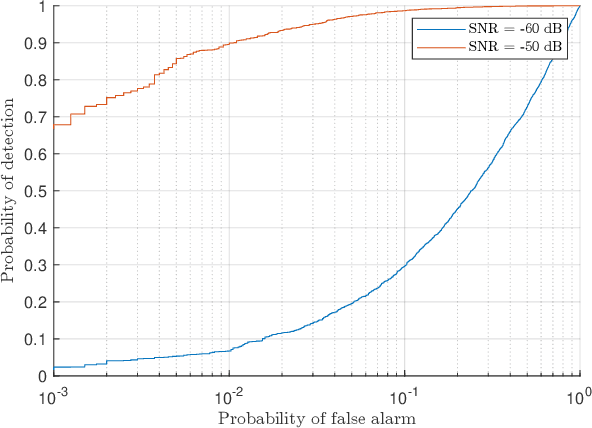
Abstract:In this paper, we consider the moving target sensing problem for integrated sensing and communication (ISAC) systems in clutter environment. Scatterers produce strong clutter, deteriorating the performance of ISAC systems in practice. Given that scatterers are typically stationary and the targets of interest are usually moving, we here focus on sensing the moving targets. Specifically, we adopt a scanning beam to search for moving target candidates. For the received signal in each scan, we employ high-pass filtering in the Doppler domain to suppress the clutter within the echo, thereby identifying candidate moving targets according to the power of filtered signal. Then, we adopt root-MUSIC-based algorithms to estimate the angle, range, and radial velocity of these candidate moving targets. Subsequently, we propose a target detection algorithm to reject false targets. Simulation results validate the effectiveness of these proposed methods.
Beam Squint Assisted User Localization in Near-Field Integrated Sensing and Communications Systems
Sep 25, 2023Abstract:Integrated sensing and communication (ISAC) has been regarded as a key technology for 6G wireless communications, in which large-scale multiple input and multiple output (MIMO) array with higher and wider frequency bands will be adopted. However, recent studies show that the beam squint phenomenon can not be ignored in wideband MIMO system, which generally deteriorates the communications performance. In this paper, we find that with the aid of true-time-delay lines (TTDs), the range and trajectory of the beam squint in near-field communications systems can be freely controlled, and hence it is possible to reversely utilize the beam squint for user localization. We derive the trajectory equation for near-field beam squint points and design a way to control such trajectory. With the proposed design, beamforming from different subcarriers would purposely point to different angles and different distances, such that users from different positions would receive the maximum power at different subcarriers. Hence, one can simply localize multiple users from the beam squint effect in frequency domain, and thus reduce the beam sweeping overhead as compared to the conventional time domain beam search based approach. Furthermore, we utilize the phase difference of the maximum power subcarriers received by the user at different frequencies in several times beam sweeping to obtain a more accurate distance estimation result, ultimately realizing high accuracy and low beam sweeping overhead user localization. Simulation results demonstrate the effectiveness of the proposed schemes.
YOLO: An Efficient Terahertz Band Integrated Sensing and Communications Scheme with Beam Squint
May 20, 2023Abstract:Using communications signals for localization is an important component of integrated sensing and communications (ISAC). In this paper, we propose to utilize the beam squint phenomenon to realize fast non-cooperative target localization in massive MIMO Terahertz band communications systems. Specifically, we construct the wideband channel model of the echo signal, and design a beamforming scheme that controls the range of beam squint by adjusting the values of phase shifters and true time delay lines (TTDs). By doing this, beams at different subcarriers can be aligned along different directions in a planned way. The received echo signals of different subcarriers will carry target information in different directions, based on which the targets' angles can be estimated through sophisticatedly designed algorithm. Moreover, we propose a supporting OFDM ranging algorithm that can estimate the targets' distances by comparing the theoretical phases and measured phases of the echo signals. Interestingly, the proposed localization method only needs the base station to transmit and receive the signals once, which can be termed You Only Listen Once (YOLO). Compared with the traditional ISAC method that requires multiple times beam sweeping, the proposed one greatly reduces the sensing overhead. Simulation results are provided to demonstrate the effectiveness of the proposed scheme.
Beam Squint Assisted User Localization in Near-Field Communications Systems
May 23, 2022
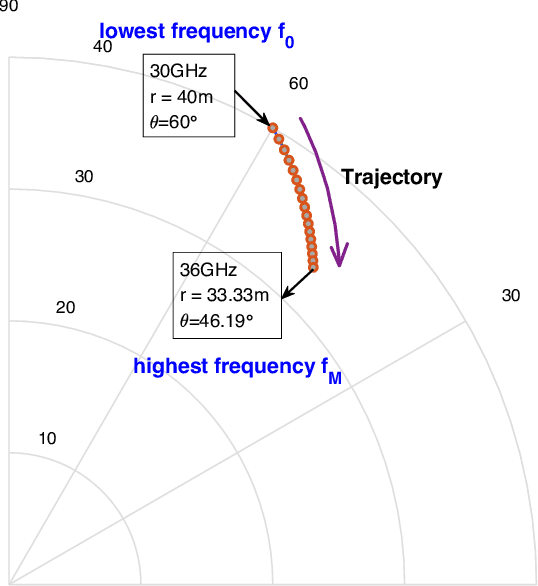
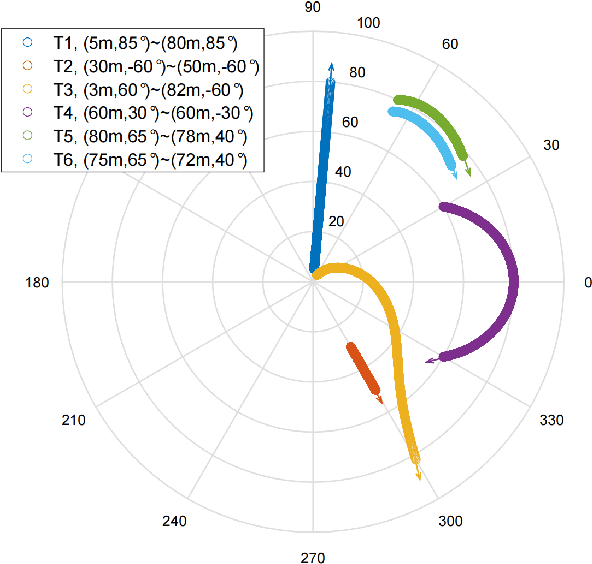
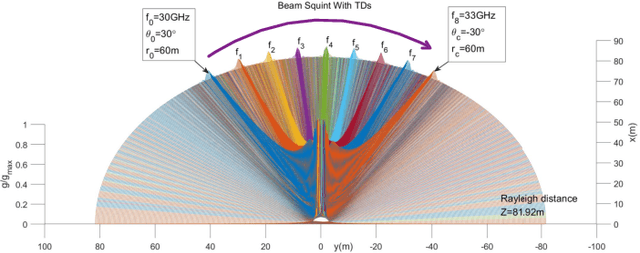
Abstract:The beam squint phenomenon in massive multi-input and multi-output wideband communications has been widely concerned recently, which generally deteriorates the beamforming performance. In this paper, we find that with the aid of the time-delay lines (TDs), the range and trajectory of the beam squint of a near-field communications system can be freely controlled, and hence it is possible to reversely utilize the beam squint for user localization. We derive the trajectory equation for near-field beam squint points and design a way to control the trajectory of these beam squint points. With the proposed design, beamforming from different subcarriers would purposely point to different angles and different distances such that users from different positions would receive the maximum power at different subcarriers. Hence, one can simply find the different users' position from the beam squint effect. Simulation results demonstrate the effectiveness of the proposed scheme.
Topic Modeling the Hàn diăn Ancient Classics
Feb 02, 2017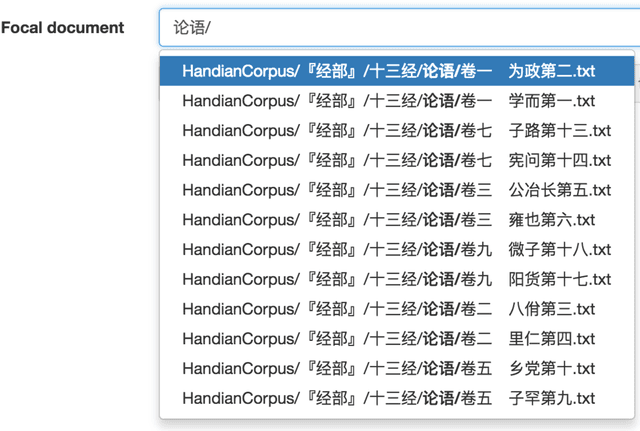
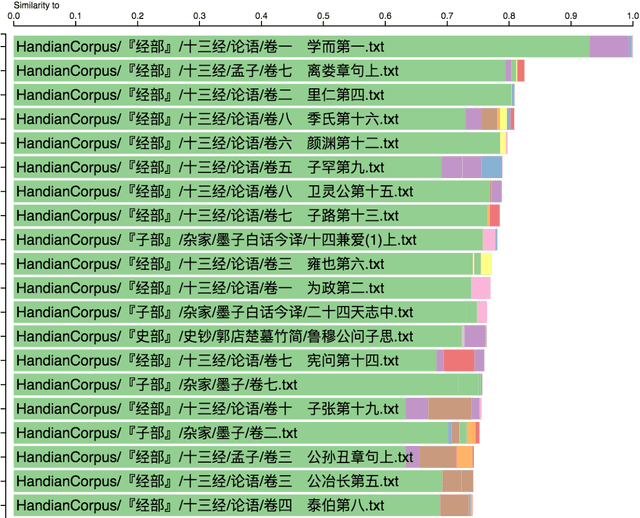
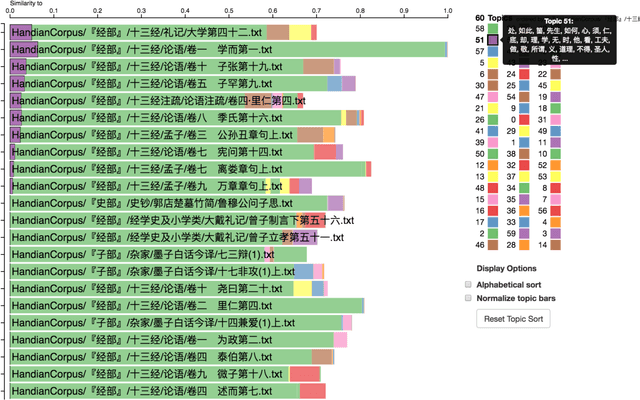
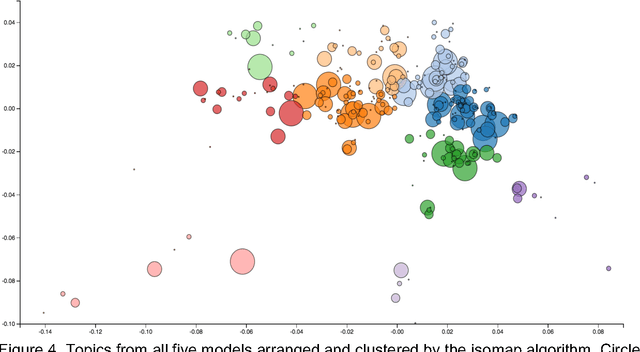
Abstract:Ancient Chinese texts present an area of enormous challenge and opportunity for humanities scholars interested in exploiting computational methods to assist in the development of new insights and interpretations of culturally significant materials. In this paper we describe a collaborative effort between Indiana University and Xi'an Jiaotong University to support exploration and interpretation of a digital corpus of over 18,000 ancient Chinese documents, which we refer to as the "Handian" ancient classics corpus (H\`an di\u{a}n g\u{u} j\'i, i.e, the "Han canon" or "Chinese classics"). It contains classics of ancient Chinese philosophy, documents of historical and biographical significance, and literary works. We begin by describing the Digital Humanities context of this joint project, and the advances in humanities computing that made this project feasible. We describe the corpus and introduce our application of probabilistic topic modeling to this corpus, with attention to the particular challenges posed by modeling ancient Chinese documents. We give a specific example of how the software we have developed can be used to aid discovery and interpretation of themes in the corpus. We outline more advanced forms of computer-aided interpretation that are also made possible by the programming interface provided by our system, and the general implications of these methods for understanding the nature of meaning in these texts.
 Add to Chrome
Add to Chrome Add to Firefox
Add to Firefox Add to Edge
Add to Edge